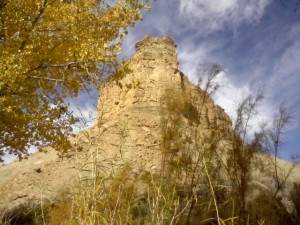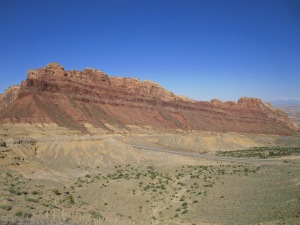Were ancient people hunting gomphotheres in Mexico?
This is a very cool question. The fact that we’re even asking it is cool. Why? Because archaeologists hadn’t found evidence of humans hunting gomphotheres in North America up to this point. It means maybe the ecological and archaeological scene in ice age North America was even more complicated than we thought. It means we have more to learn. I think that having more to learn is a gift we don’t always appreciate. Read More…
Naia, an ancient human skeleton in Mexico: why it’s in the news and why it’s important
You might have seen some stories in the news lately about a skeleton of a young woman that was found in a cave in Mexico. If you’re anything like me, you think that any find like this is interesting and important. But not every such find makes the news. Wondering why this particular discovery, published last week in Science, caused such a stir? Read More…
Another place where history, science come together
Check out this awesome discussion of New England’s stone walls!
http://bit.ly/1lCN3DV
via EARTH magazine
Mice, foxes, deer, coyotes, ticks, & Lyme disease
This is a good tale to follow if you’ve ever wondered why it’s so difficult to know how climate and environmental changes will affect species and ecosystems. The simple answer: because these systems are very complex,
The Back Rooms of Museums: a Dusty Scientific Frontier?
If you love paleontology and biology, you’re probably excited whenever you hear of a new species discovered, somewhere Read More…
Why corridors matter
In ecological terms, a corridor is a pathway of natural habitat between two larger patches of habitat. Animals can use corridors to travel from one living space to another. As more and more space is developed, we are sacrificing these ecologically crucial pathways. Here’s one reason that corridors matter:
The Importance of Public Knowledge in Preservation
Check out this fascinating and tragic story of threatened sites in the American southwest:
You found a fossil… Now what? (the very condensed version)
Outcrops like these are what people often think of as fossil localities (credit: Lauren Milideo)
Where do people find fossils?
It happens often. Ask any museum curator, and she can tell you countless stories of people coming to the museum with items they found in the backyard or in the garden. People find teeth, and sometimes bones, on the beach or in a stream bed. Sometimes, construction workers or fishermen turn up a huge bone or a tooth during the course of their work. Here is a very brief overview of some things you can do if you find a nonhuman vertebrate fossil or bone (i.e. the remains of an animal that had a backbone – like a
things you can do if you find a nonhuman vertebrate fossil or bone (i.e. the remains of an animal that had a backbone – like a
A hidden portion of the sea-level rise story
Check this out: a different, and less frequently discussed, portion of the sea-level rise story:
http://www.earthmagazine.org/article/sinking-sediment-deltas-important-swelling-seas
New article in EARTH magazine!
Check this out: a new story about the links between a major cultural event and its environmental contributors:
http://www.earthmagazine.org/article/environmental-changes-contributed-mediterranean-cultural-crisis



Recent Comments